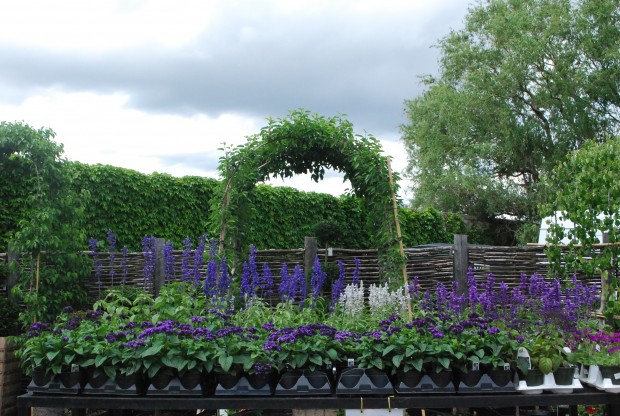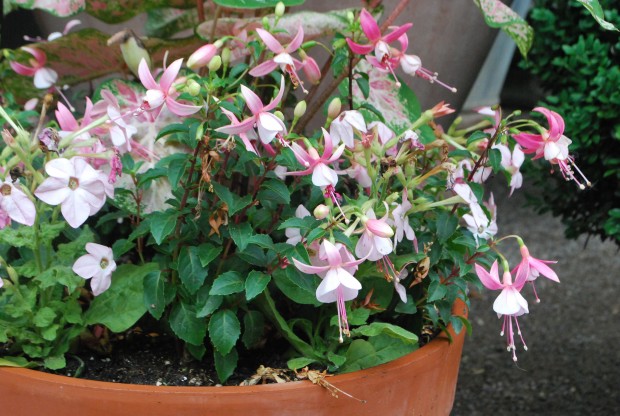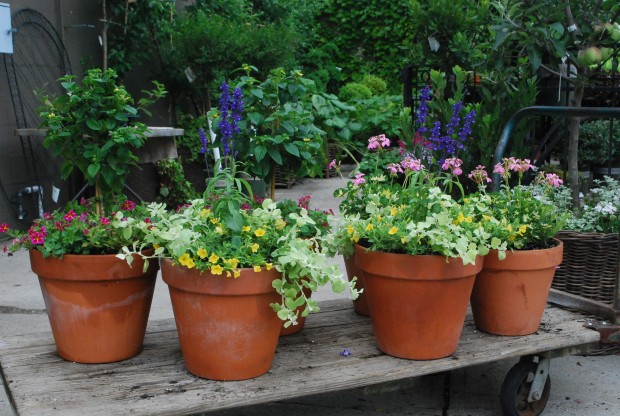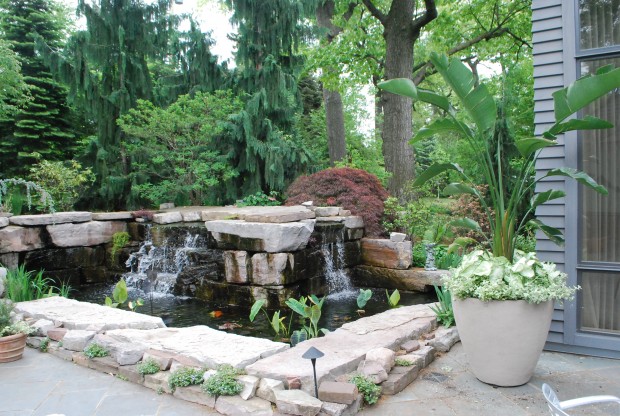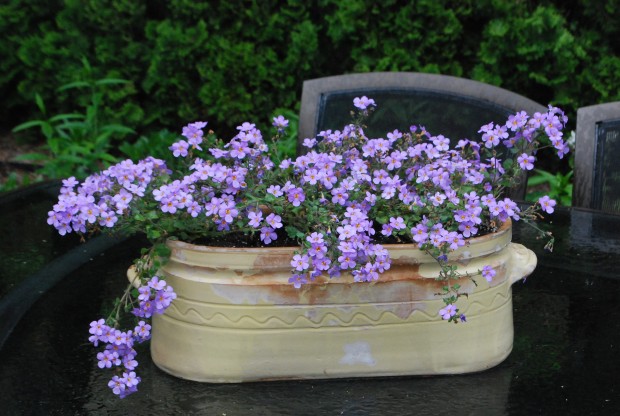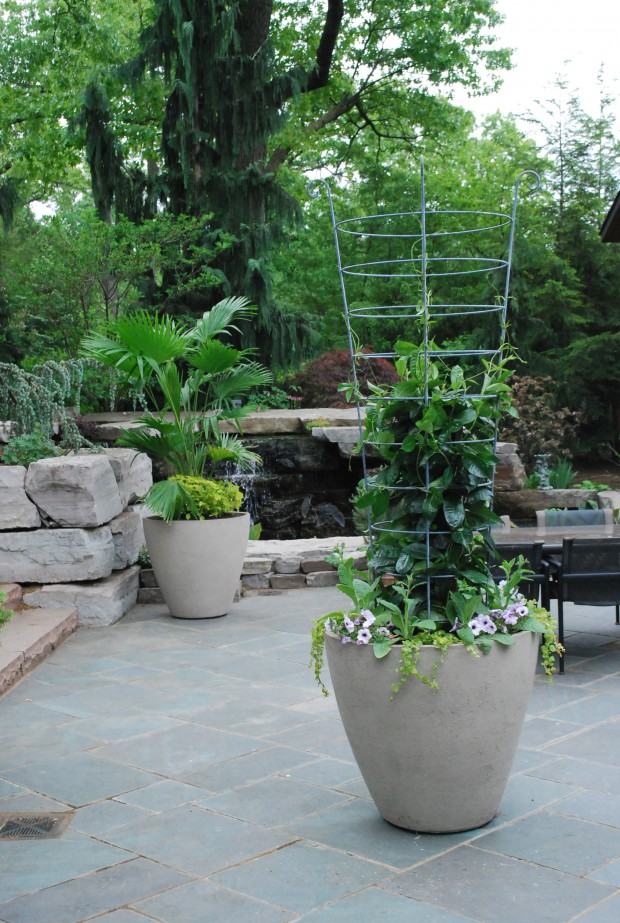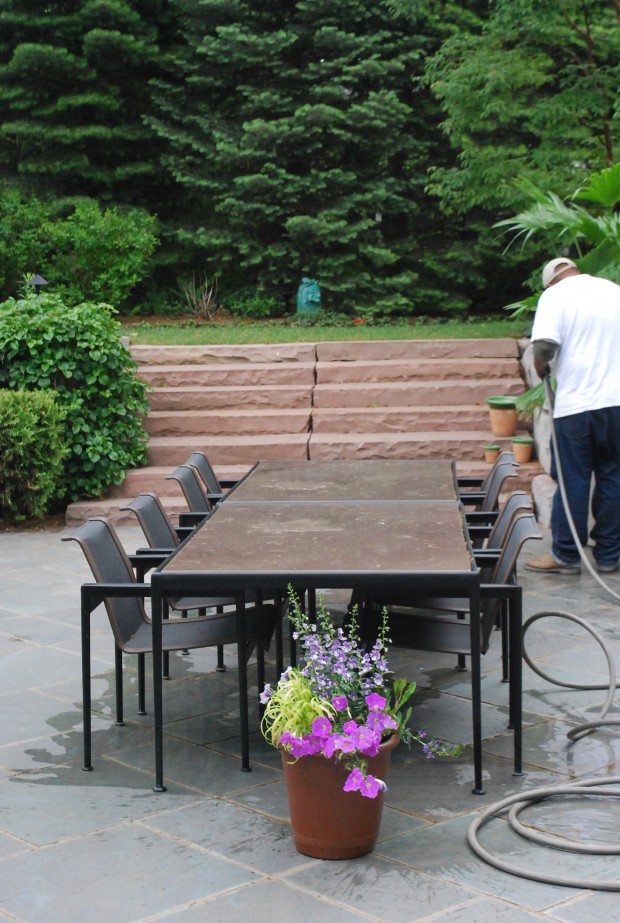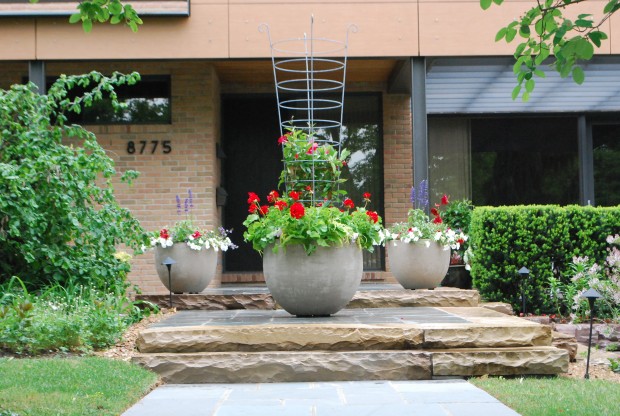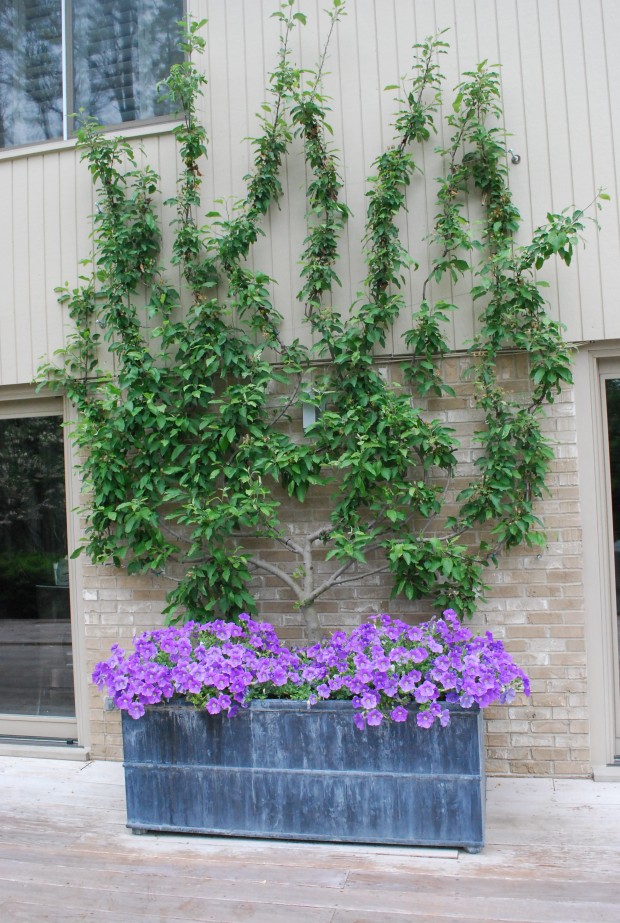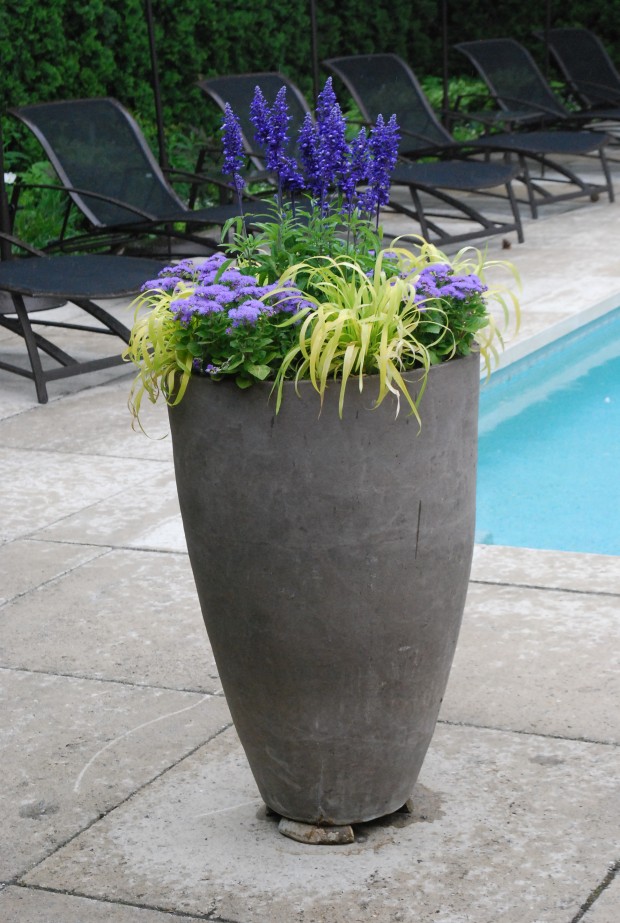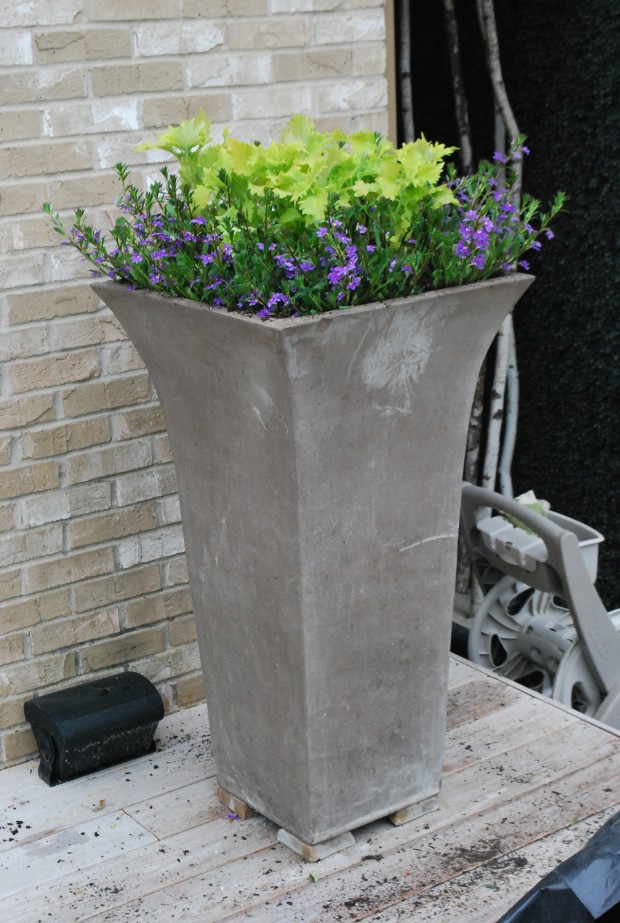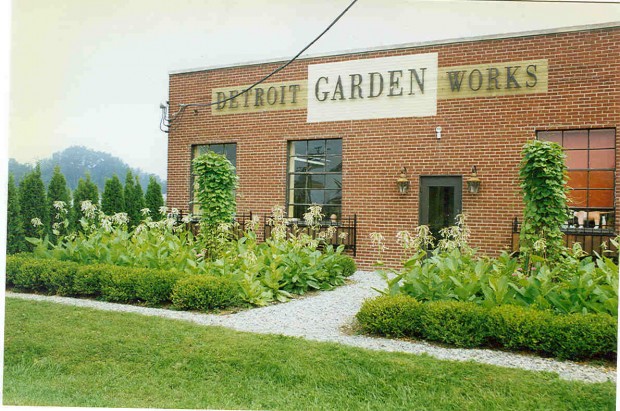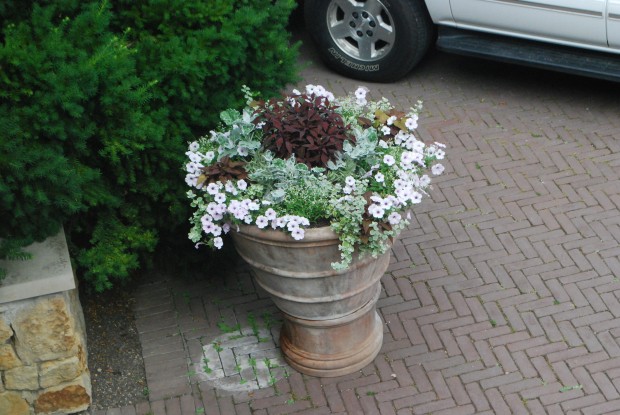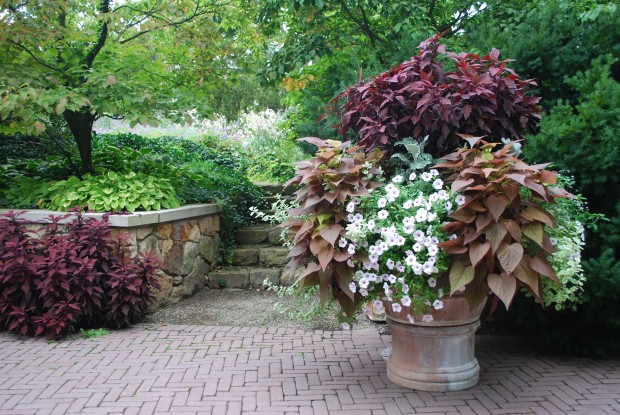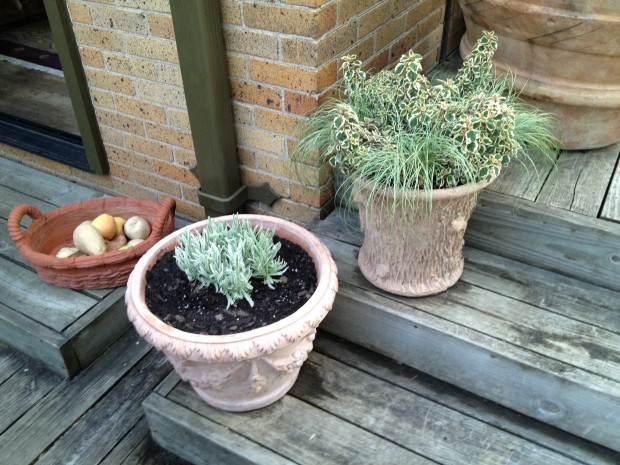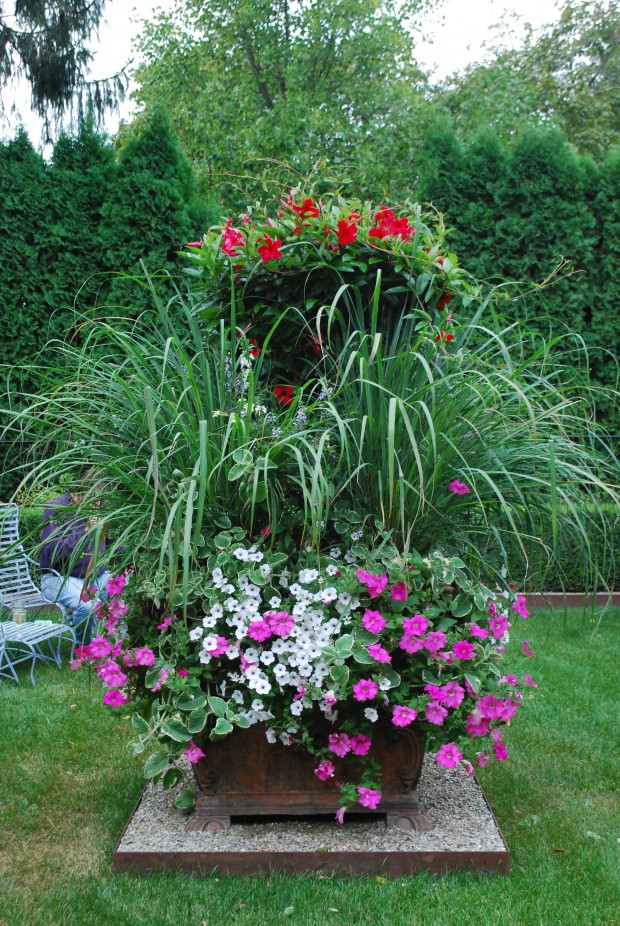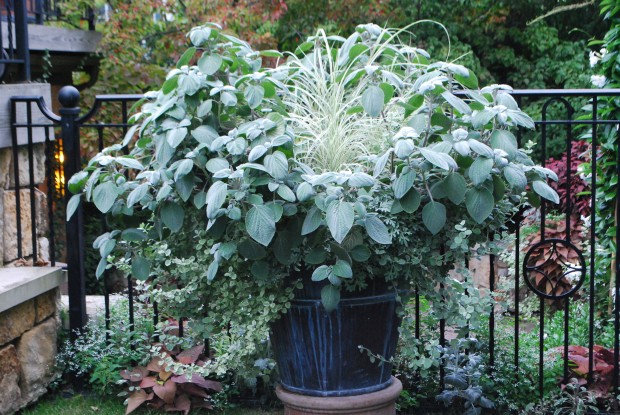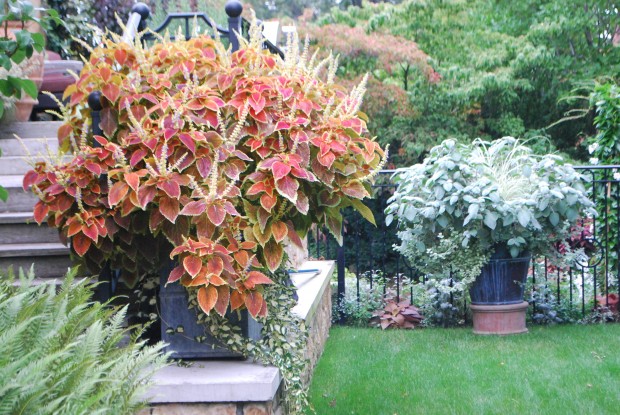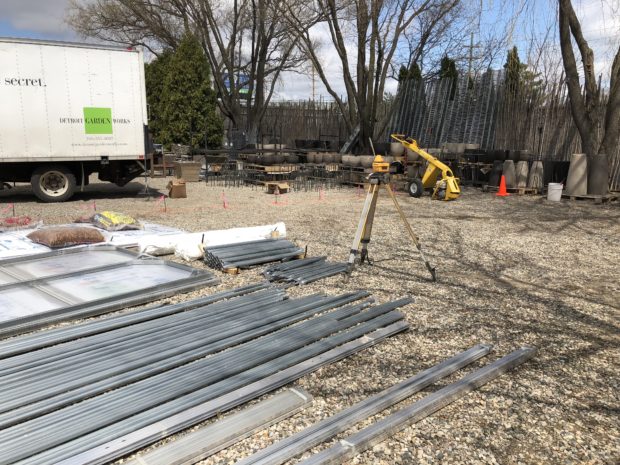 A Michigan spring is a big fluid situation. We have cold days and cold nights. We have hot days and freezing nights. Every day is a new weather drama, with a new cast of characters. We have a glass roof over one room inside Detroit Garden Works. Once we start buying in seasonal and tropical plants, it feels like a little house. During those cold spells, we jam no end of cold intolerant plants under that glass roof, to keep them happy. For years we have moved seasonal plants in and out of our garage, given the night time temperature forecast. That in and out is a a huge chore. So late last winter we made arrangements to purchase a big house for our plants. A 60′ long by 30′ wide gothic styled house that would put all of our seasonal plants under cover. The house got delivered on a flatbed truck. Seeing the boxes and pieces on the ground made the hair on the back of my neck stand up. This is a greenhouse?
A Michigan spring is a big fluid situation. We have cold days and cold nights. We have hot days and freezing nights. Every day is a new weather drama, with a new cast of characters. We have a glass roof over one room inside Detroit Garden Works. Once we start buying in seasonal and tropical plants, it feels like a little house. During those cold spells, we jam no end of cold intolerant plants under that glass roof, to keep them happy. For years we have moved seasonal plants in and out of our garage, given the night time temperature forecast. That in and out is a a huge chore. So late last winter we made arrangements to purchase a big house for our plants. A 60′ long by 30′ wide gothic styled house that would put all of our seasonal plants under cover. The house got delivered on a flatbed truck. Seeing the boxes and pieces on the ground made the hair on the back of my neck stand up. This is a greenhouse?
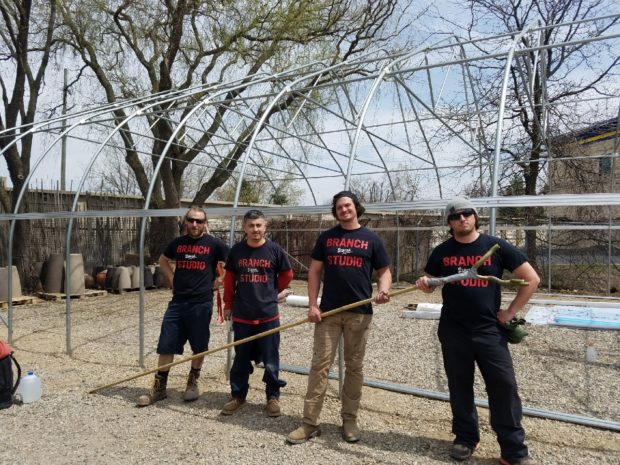 Of course I asked Buck to take the lead. He was reluctant to take on the big house, but he did. The worst part of getting it aloft was the fact that we could not dig into the ground to set the posts. I suspect this part of our property was formerly a road bed. It was full of asphalt, big rocks, and giant pieces of concrete. It took a week, 4 people, and a jackhammer to dig all of the holes for the posts. The landscape crew took on that thankless job, day after day. The Branch crew saw to setting every post in concrete in a perfectly vertical position. This may sound easy, but it is not. I have never seen so many levels and so many measuring tapes in one place in my life.
Of course I asked Buck to take the lead. He was reluctant to take on the big house, but he did. The worst part of getting it aloft was the fact that we could not dig into the ground to set the posts. I suspect this part of our property was formerly a road bed. It was full of asphalt, big rocks, and giant pieces of concrete. It took a week, 4 people, and a jackhammer to dig all of the holes for the posts. The landscape crew took on that thankless job, day after day. The Branch crew saw to setting every post in concrete in a perfectly vertical position. This may sound easy, but it is not. I have never seen so many levels and so many measuring tapes in one place in my life.
 Once the posts were set, we were ready to set the ribs aloft. We had willow branches in the way that had to be cut, and a lots of work to be done in the airspace. The willow that had to be pruned back provided material for a tool the Branch fabricators needed. I will say this tool took my breath away. I like simple solutions.
Once the posts were set, we were ready to set the ribs aloft. We had willow branches in the way that had to be cut, and a lots of work to be done in the airspace. The willow that had to be pruned back provided material for a tool the Branch fabricators needed. I will say this tool took my breath away. I like simple solutions.
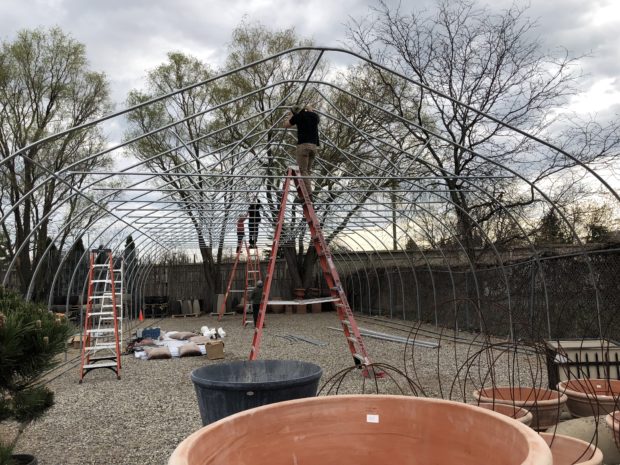
One person on the ground held the rib in the proper position with the willow tool, so the person on the ladder could bolt the support bars in place. The greenhouse came with directions that were very unclear. Given that this was Branch’s first greenhouse, they proceeded cautiously. But once the ribs were set, the structure was rock solid.
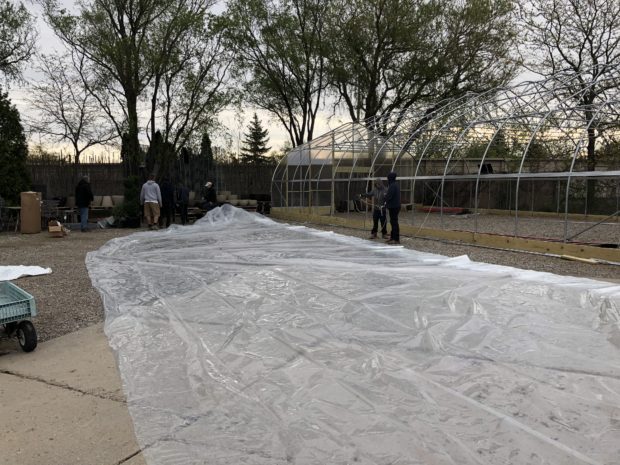 I had no idea how a 2000 square foot piece of 6 mil plastic would go over the house, and be secured, but it turned out to be fairly simple. We had to wait for a windless day, with no rain. Apparently wet plastic is very difficult to slide over the ribs. After laying out the plastic next to the house, ropes were secured to the edge of the plastic with the help of small rocks. Rocks? The plastic was bunched up over a rock, much like the paper wrapper over a tootsie roll pop, and then secured with rope. Of course it is done this way. The plastic would slip through a loop of rope, no matter how tight it was tied. The rock secured the plastic to the rope. This is how greenhouse people do it. Ingenious.
I had no idea how a 2000 square foot piece of 6 mil plastic would go over the house, and be secured, but it turned out to be fairly simple. We had to wait for a windless day, with no rain. Apparently wet plastic is very difficult to slide over the ribs. After laying out the plastic next to the house, ropes were secured to the edge of the plastic with the help of small rocks. Rocks? The plastic was bunched up over a rock, much like the paper wrapper over a tootsie roll pop, and then secured with rope. Of course it is done this way. The plastic would slip through a loop of rope, no matter how tight it was tied. The rock secured the plastic to the rope. This is how greenhouse people do it. Ingenious.
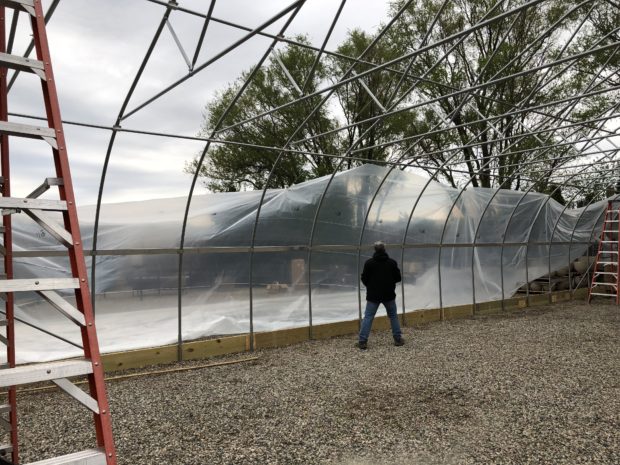 Each rope was thrown over the top of the house, and handed off to a person on the other side.
Each rope was thrown over the top of the house, and handed off to a person on the other side.
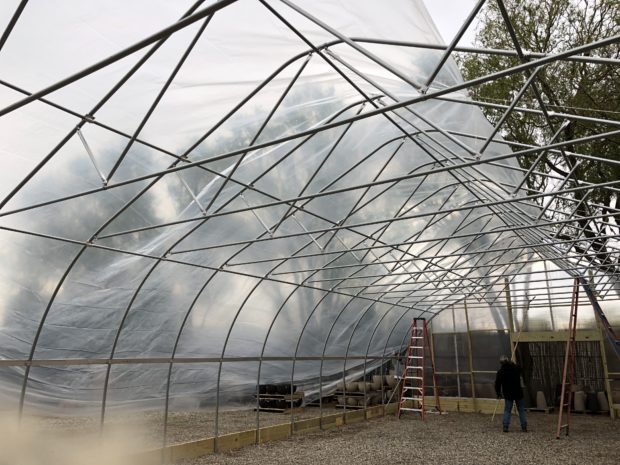 8 rope pullers and two wrinkle reliever people made quick work of getting this giant piece of plastic over the top. The plastic keeps heat in the house, and wind, rain, hail and other weather events off the plants.
8 rope pullers and two wrinkle reliever people made quick work of getting this giant piece of plastic over the top. The plastic keeps heat in the house, and wind, rain, hail and other weather events off the plants.
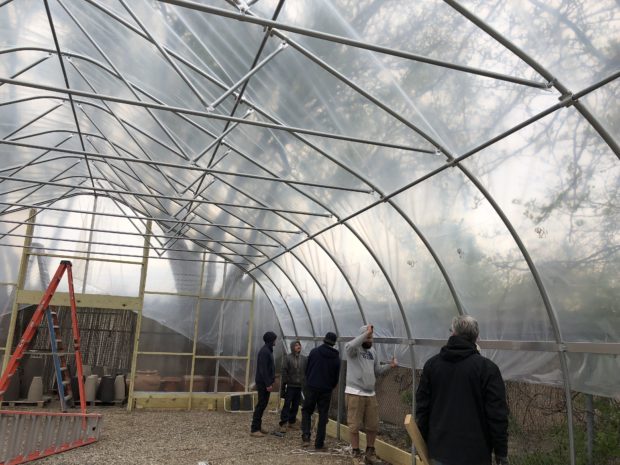 Once the plastic was in place, it was secured on both sides in a channel with a locking cap that runs the entire length of the house. This was a very cold day. Instantly it seemed warmer inside the house than out. Seasonal plants hail from tropical climates. They dislike cold temperatures, and cold soil even more. In mid May, the best place for annual plants is under cover. Planted out in our cold soil too soon, they sit there. Inside, they grow.
Once the plastic was in place, it was secured on both sides in a channel with a locking cap that runs the entire length of the house. This was a very cold day. Instantly it seemed warmer inside the house than out. Seasonal plants hail from tropical climates. They dislike cold temperatures, and cold soil even more. In mid May, the best place for annual plants is under cover. Planted out in our cold soil too soon, they sit there. Inside, they grow.
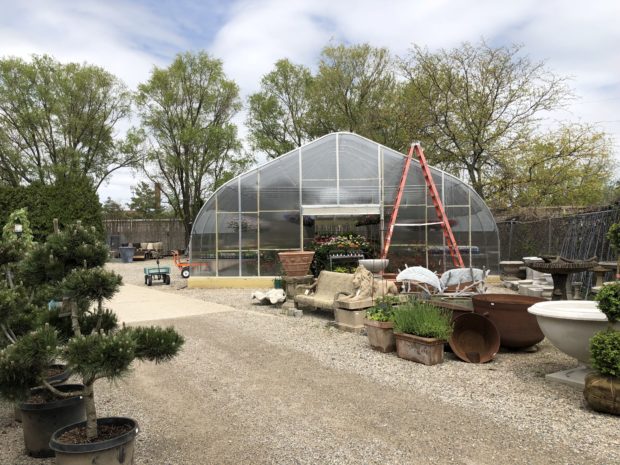 The short ends of the house are rigid polycarbonate panels. We will install the polycarbonate sliding doors later. Right now, the house is open to promote good air circulation, and to permit carts to come and go.
The short ends of the house are rigid polycarbonate panels. We will install the polycarbonate sliding doors later. Right now, the house is open to promote good air circulation, and to permit carts to come and go.
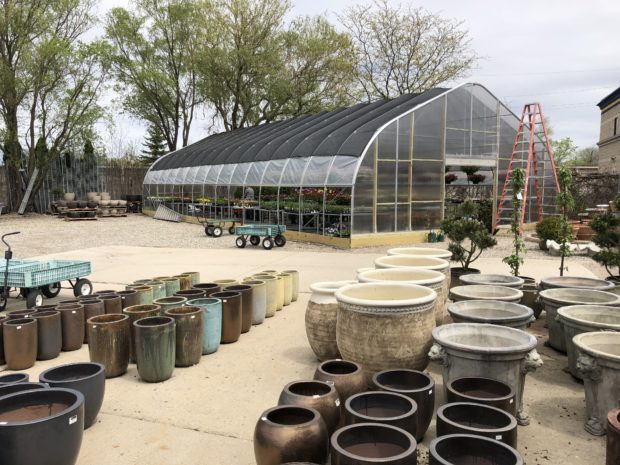 The final layer over top of the house is a shade cloth. It blocks 40 percent of the sun coming through the plastic. This will keep the house much cooler when the weather gets hot. This means less stress to the plants that are in small pots. And a more comfortable place for people to look at plants. The long sides have separate plastic panels that roll up, so when its warm, some of the heat is able to escape.
The final layer over top of the house is a shade cloth. It blocks 40 percent of the sun coming through the plastic. This will keep the house much cooler when the weather gets hot. This means less stress to the plants that are in small pots. And a more comfortable place for people to look at plants. The long sides have separate plastic panels that roll up, so when its warm, some of the heat is able to escape.
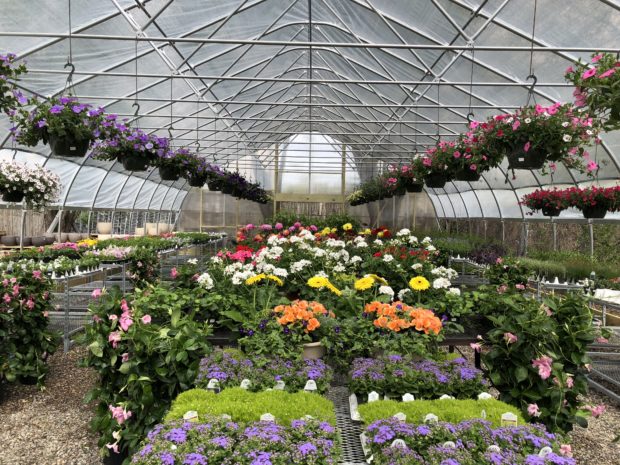 We are by no means a business specializing in seasonal plants. Nor are we a nursery specializing in trees, shrubs, perennials and ground covers for the landscape. We specialize in pots, tools, ornament, sculptures, fountains, furniture and interesting objects for gardens. Rob sees to making the Works a place friendly and engaging to those people who garden. And those people for whom the beauty of a garden is a way of life. Those objects around which a garden or landscape can be organized is just a part of the equation. Of course we treasure the plants, especially plants that can be grown in containers.
We are by no means a business specializing in seasonal plants. Nor are we a nursery specializing in trees, shrubs, perennials and ground covers for the landscape. We specialize in pots, tools, ornament, sculptures, fountains, furniture and interesting objects for gardens. Rob sees to making the Works a place friendly and engaging to those people who garden. And those people for whom the beauty of a garden is a way of life. Those objects around which a garden or landscape can be organized is just a part of the equation. Of course we treasure the plants, especially plants that can be grown in containers.
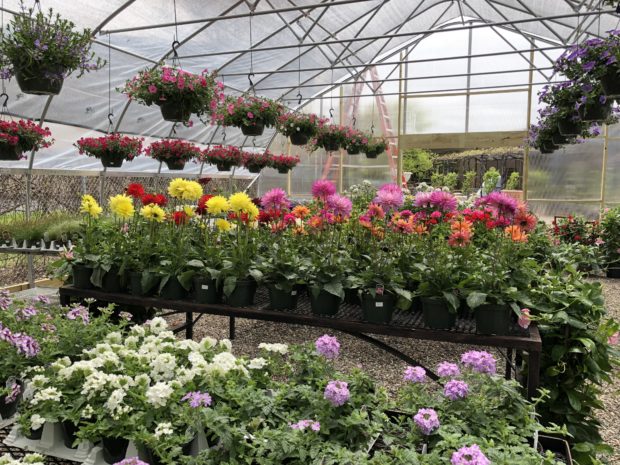 It seems fitting and reasonable to have a plant house. What I had not planned on was how much I would enjoy it. Thank you Branch for putting up a big house.
It seems fitting and reasonable to have a plant house. What I had not planned on was how much I would enjoy it. Thank you Branch for putting up a big house.
